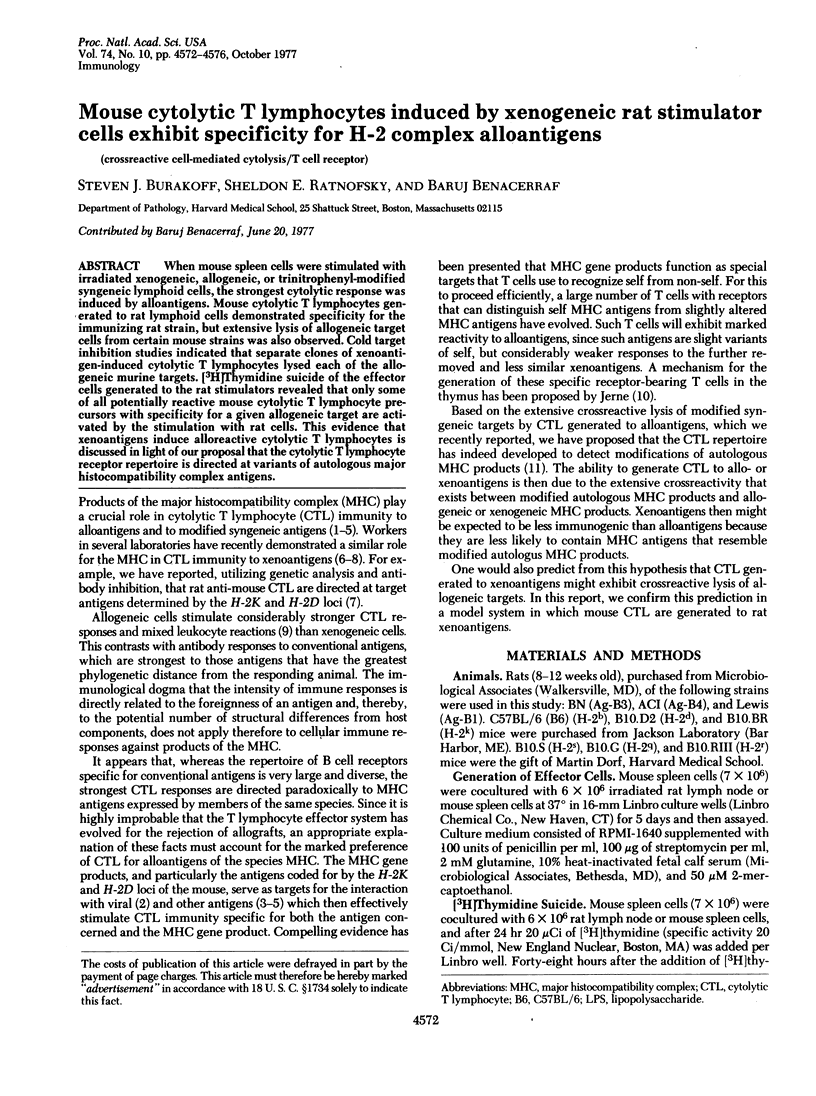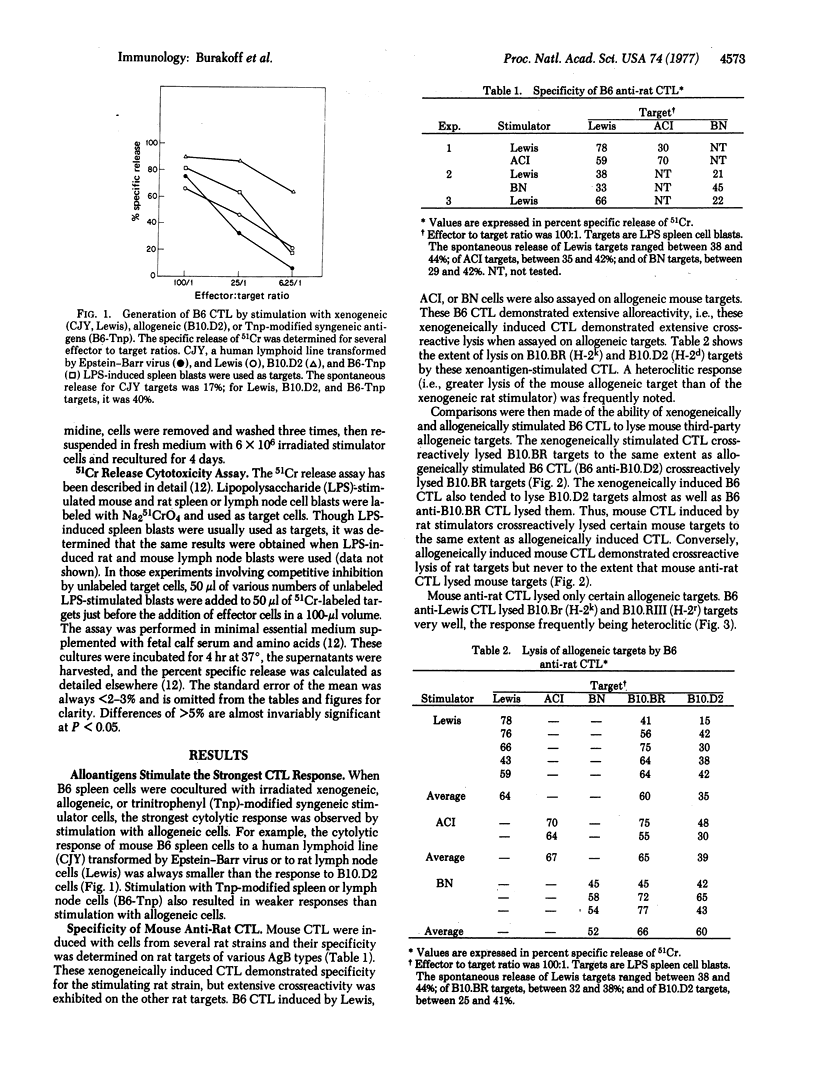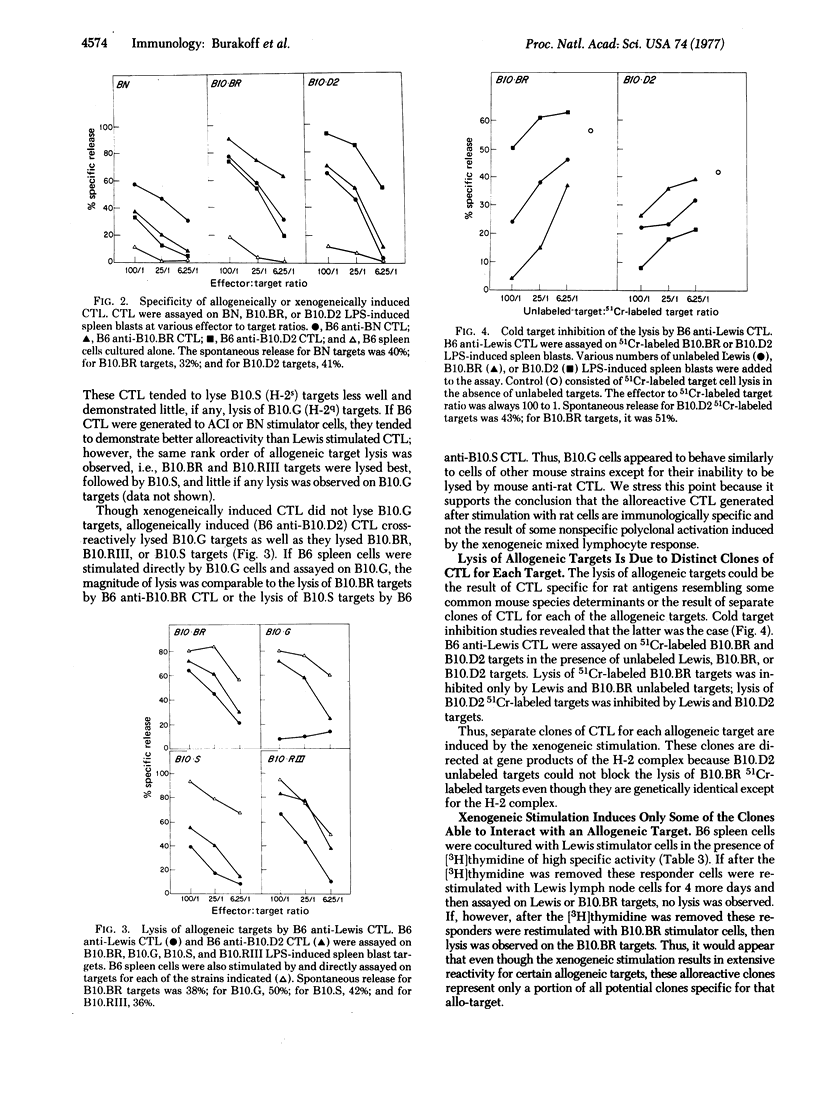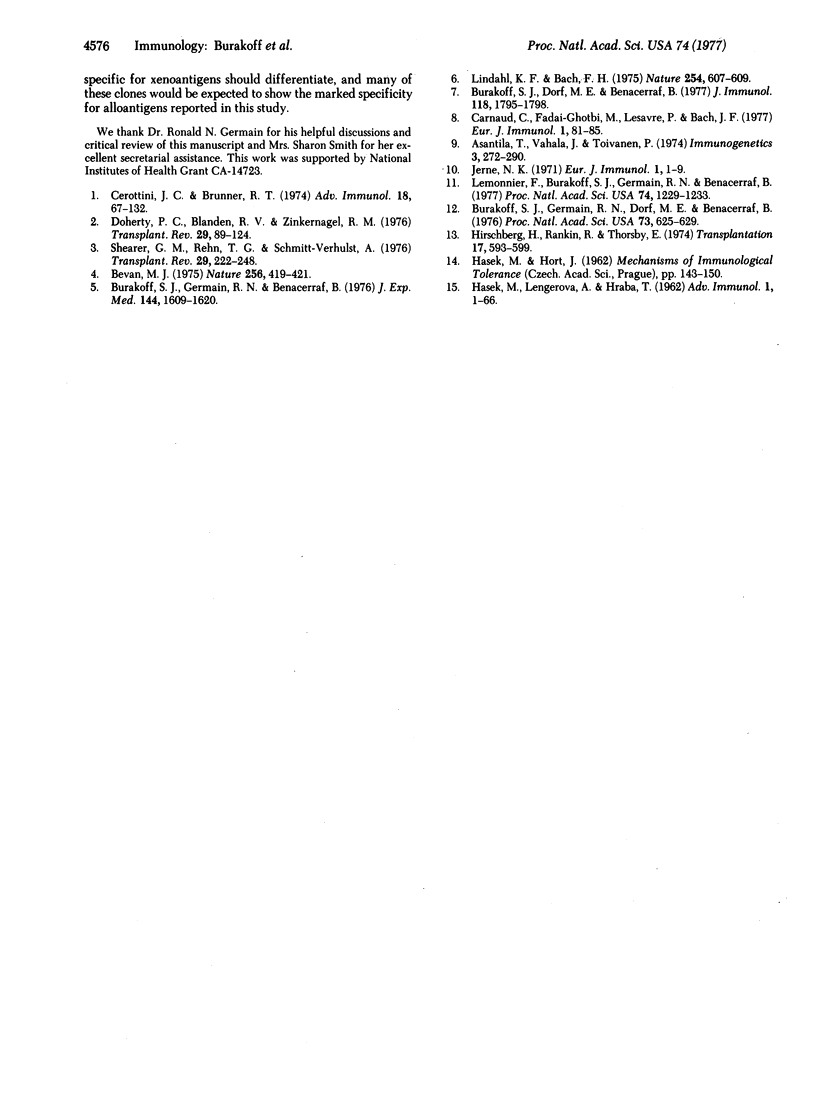Abstract
When mouse spleen cells were stimulated with irradiated xenogeneic, allogeneic, or trinitrophenyl-modified syngeneic lymphoid cells, the strongest cytolytic response was induced by alloantigens. Mouse cytolytic T lymphocytes generated to rat lymphoid cells demonstrated specificity for the immunizing rat strain, but extensive lysis of allogeneic target cells from certain mouse strains was also observed. Cold target inhibition studies indicated that separate clones of xenoantigen-induced cytolytic T lymphocytes lysed each of the allogeneic murine targets. [3H]Thymidine suicide of the effector cells generated to the rat stimulators revealed that only some of all potentially reactive mouse cytolytic T lymphocyte precursors with specificity for a given allogeneic target are activated by the stimulation with rat cells. This evidence that xenoantigens induce alloreactive cytolytic T lymphocyte receptor repertoire is directed at variants of autologous major histocompatibility complex antigens.
Full text
PDF




Selected References
These references are in PubMed. This may not be the complete list of references from this article.
- Bevan M. J. Interaction antigens detected by cytotoxic T cells with the major histocompatibility complex as modifier. Nature. 1975 Jul 31;256(5516):419–421. doi: 10.1038/256419a0. [DOI] [PubMed] [Google Scholar]
- Burakoff S. J., Dorf M. E., Benacerraf B. Specificity of rat xenogeneic cell-mediated cytolysis for the products of the K and D loci of the mouse H-2 complex. J Immunol. 1977 May;118(5):1795–1798. [PubMed] [Google Scholar]
- Burakoff S. J., Germain R. N., Benacerraf B. Cross-reactive lysis of trinitrophenyl (TNP)-derivatized H-2 incompatible target cells by cytolytic T lymphocytes generated against syngeneic TNP spleen cells. J Exp Med. 1976 Dec 1;144(6):1609–1620. doi: 10.1084/jem.144.6.1609. [DOI] [PMC free article] [PubMed] [Google Scholar]
- Burakoff S. J., Germain R. N., Dorf M. E., Benacerrah B. Inhibition of cell-mediated cytolysis of trinitrophenyl-derivatized target cells by alloantisera directed to the products of the K and D loci of the H-2 complex. Proc Natl Acad Sci U S A. 1976 Feb;73(2):625–629. doi: 10.1073/pnas.73.2.625. [DOI] [PMC free article] [PubMed] [Google Scholar]
- Carnaud C., Fadaï-Ghotbi M., Lesavre P., Bach J. F. Education of human lymphocytes against mouse cells: specific recognition of H-2 antigens. Eur J Immunol. 1977 Feb;7(2):81–85. doi: 10.1002/eji.1830070206. [DOI] [PubMed] [Google Scholar]
- Cerottini J. C., Brunner K. T. Cell-mediated cytotoxicity, allograft rejection, and tumor immunity. Adv Immunol. 1974;18:67–132. doi: 10.1016/s0065-2776(08)60308-9. [DOI] [PubMed] [Google Scholar]
- Cytolytic thymus-derived lymphocytes specific for allogeneic stimulator cells crossreact with chemically modified syngeneic cells. Proc Natl Acad Sci U S A. 1977 Mar;74(3):1229–1233. doi: 10.1073/pnas.74.3.1229. [DOI] [PMC free article] [PubMed] [Google Scholar]
- Doherty P. C., Blanden R. V., Zinkernagel R. M. Specificity of virus-immune effector T cells for H-2K or H-2D compatible interactions: implications for H-antigen diversity. Transplant Rev. 1976;29:89–124. doi: 10.1111/j.1600-065x.1976.tb00198.x. [DOI] [PubMed] [Google Scholar]
- Hirschberg H., Rankin B., Thorsby E. Specificity of human lymphocytes proliferating in response to allogeneic and xenogeneic cells in vitro. Transplantation. 1974 Jun;17(6):593–599. doi: 10.1097/00007890-197406000-00008. [DOI] [PubMed] [Google Scholar]
- Jerne N. K. The somatic generation of immune recognition. Eur J Immunol. 1971 Jan;1(1):1–9. doi: 10.1002/eji.1830010102. [DOI] [PubMed] [Google Scholar]
- Lindahl K. F., Bach F. H. Human lymphocytes recognise mouse alloantigens. Nature. 1975 Apr 17;254(5501):607–609. doi: 10.1038/254607a0. [DOI] [PubMed] [Google Scholar]
- Shearer G. M., Rehn T. G., Schmitt-Verhulst A. M. Role of the murine major histocompatibility complex in the specificity of in vitro T-cell-mediated lympholysis against chemically-modified autologous lymphocytes. Transplant Rev. 1976;29:222–246. doi: 10.1111/j.1600-065x.1976.tb00203.x. [DOI] [PubMed] [Google Scholar]


